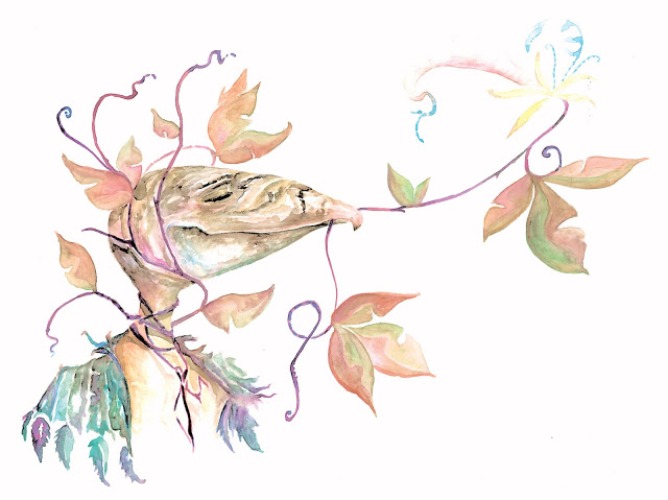World of the Earthspeakers
The Art, History, Music and Tales of a Mysterious Realm
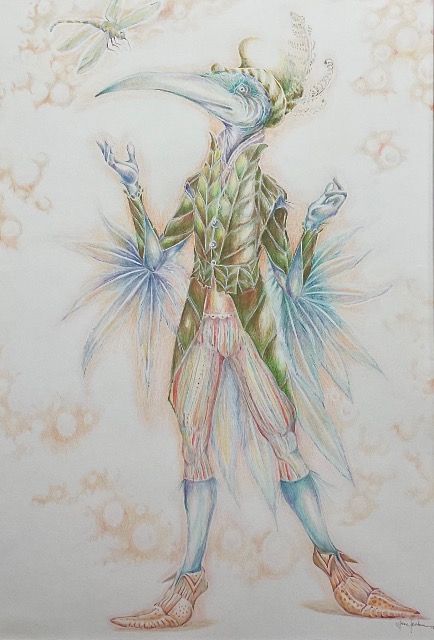

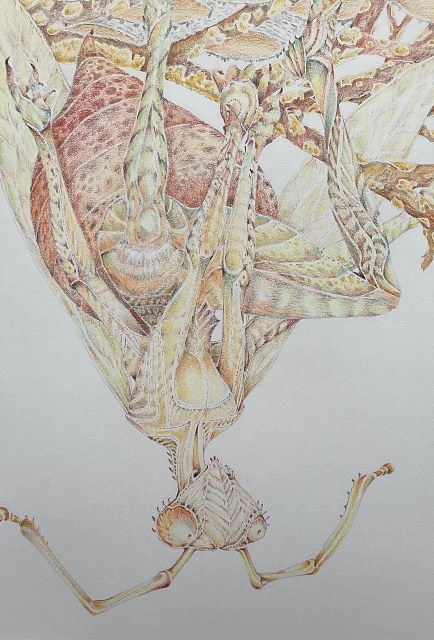
Earth, without me, You do not speak, and without You, I do not speak.
Ehtum'yanu, B'h-shpirak k'nmeye'eh adar'lhu'un Bh'shpirak n'nmye'eh adar'lhu'un.
I speak for You, not for myself, but for the teaching of the offspring, the children
K'u adar'lhu'un yae noush sheshtol yae K'ul'm-adarlhu, fehrn yea n'noush kw'madoru ku'l ebya'enem yir n'lau
and their children, so that they may also speak for You.
ebya'enem yir n'lau, akhlam adar'lhutsi eb-yenebah yae noush.
- Ancient Earthspeech, a prayer to the All-Mother, Ehtum'yanu
The Earthspeakers have existed alongside Man throughout history, and were widely regarded by our ancestors as guides and gods. These once numerous beings possessed both animal and human traits, and came to serve as ambassadors between the realms of Men and Nature. As Man distanced himself from his source, the Earthspeakers split into factions: some turned against Men and looked to the protection of Earth. Others withdrew into the wild and isolated themselves. A third faction continued to serve as a bridge between Men and their natural origins. These ambassadors remain elusively among us, keeping watch upon the places where Man and Nature meet, safeguarding the secret places where Nature resides, and encouraging those who would listen to enter into the realms of the Sacred Natural, following the ancient ways.
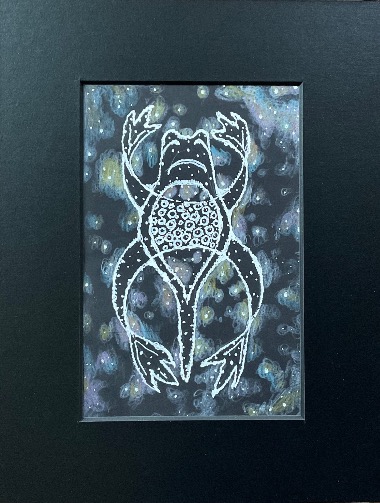
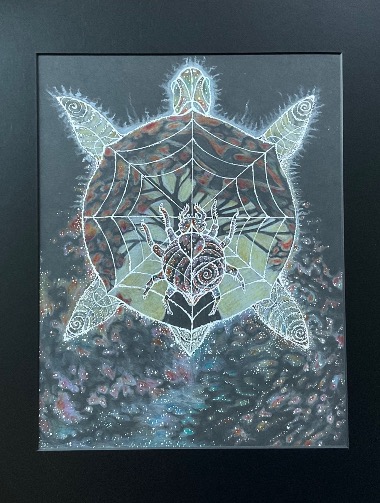
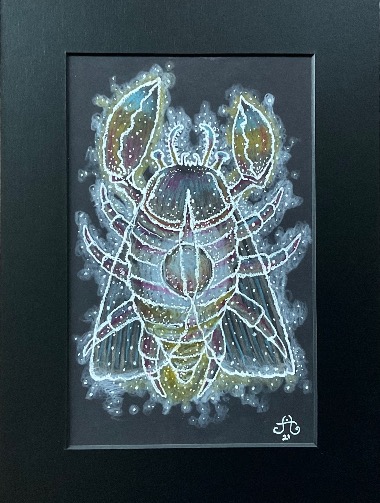
“And these, the Ambassadors of Earth,
were given the face of the Beast, so that
Nature would not flee.
And theywere given the hand of Man,
so that they might reach into his world, and remind him from whence he came.”
C'eku, Shelkie of the Dillydell Marches
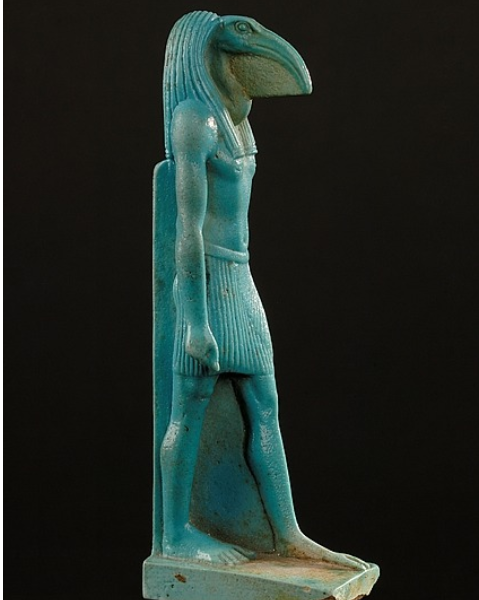
Faieance statue of Thoth, Saite period, 26th Dynasty, 7th-6th century BCE
The term 'anthropomorphic' refers to animals who possess human traits, such as the March Hare from Lewis Carroll's 'Alice in Wonderland'. The word 'Zoomorphic' gives anything, perhaps even an event, such as a natural disaster, human or animal traits. The word 'Therianthropic' refers to the ability to shape-shift between one form and another, such as Beorn (in Tolkien's 'The Hobbit'), who has the ability to change from a fierce bear to a man and back again. Numerous human cultures throughout history have celebrated and honored these various forms in costumes, ceremonial rituals, songs, dances, art and folklore.
Below are just a few examples of the numerous human-animal amalgams depicted in the world of Men. For further reading on Anthropomorphic, Zoomorphic and Therianthropic forms in earth history, and for more examples of these forms in art, myth and folklore, visit the Links page (currently under construction).

Pottery
This 5th century artifact from present day Iran depicts a bird figure, suggesting not only arms and hands but also a bipedal stance. Such pottery was common in this region and during this time period, though no explanation for such imagery was later discovered.
Figurines
The Lowenmensch, or Lion Man figurine, discovered in present day Germany, made of mammoth tusk, is perhaps the oldest 'Morphic' carving yet discovered. Later figurines like this one depicted nearly every imaginable animal in partial human form.
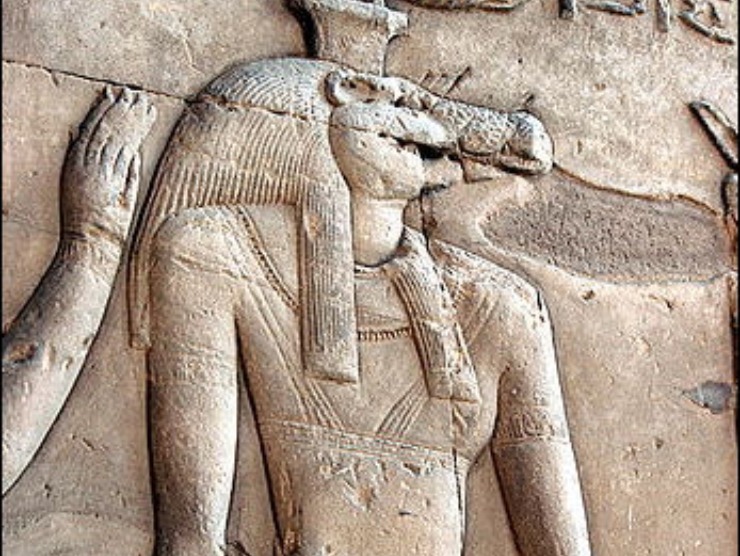
Hieroglyphs
The most widely known and prolific historical record relating to animal/human forms are the numerous animal deities of Kemet, the land later known as Misr and Egypt. Many of Kemet's 2000 gods and goddesses were depicted as amalgams of animals and man.
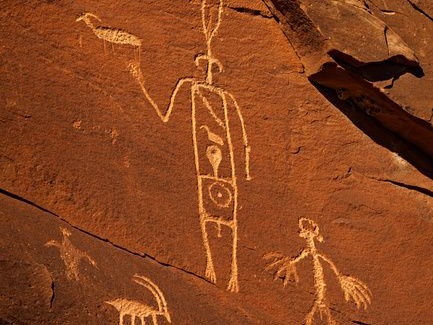
Petroglyphs
Such carvings are found worldwide, telling the story of the hunt, depicting daily life, and also honoring mysterious beings. This image shows a large horned figure, whose form holds within it the suggestion of other natural entities.
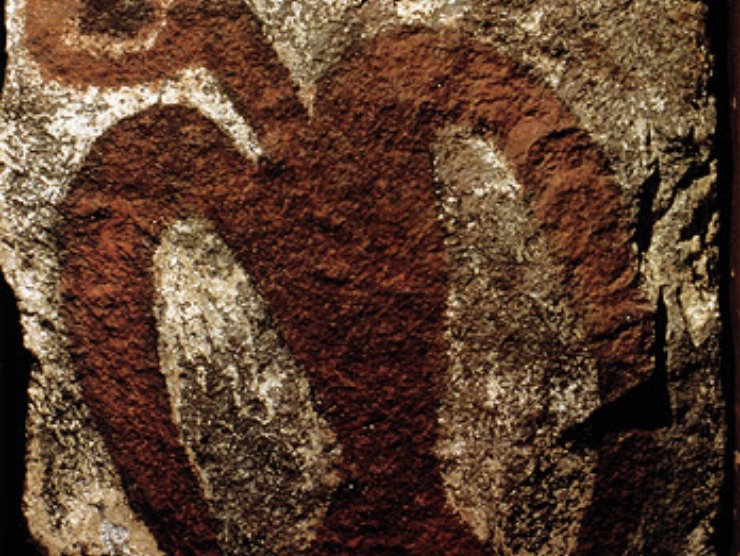
Rock painting
'Tangata Manu' literally means, 'Bird Man', a legend from Rapa Nui, Easter Island. Many cultures represented gods and goddesses as a blend of various beings;
even in modern times, the mascots of many sports teams meld the human form with an animal head.
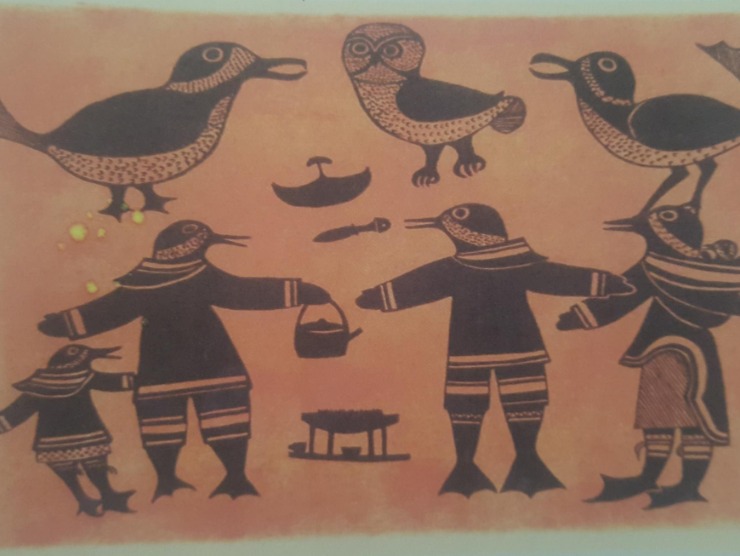
Modern Works
This Inuit linocut, from 1960, depicts a family group of animal people wearing clothing and using human tools. They appear with local animals, or perhaps the work means to suggest the ability of these individuals to shape-shift from one of these forms to another.

Shown above are Anubis (right) and Horus (left). Horus wears the Pschent or Sekhemty, the ruler's crown of a united Egypt, which suggests that, in antiquity, earth entities were seen as equals in possessing divine wisdom and societal power. Egyptian hieroglyphs are well known for being incredibly accurate and detail oriented (click here for a video).
The Shamanic Role
A Sacred Connection
Many specialists within the spectrum of historical study agree that early humans readily sought out and accessed dream- and altered states through ritual and rite. Whether it was typical for an entire clan to engage in these practices, or if designated seers, ordained individuals and shaman acquired access, it seems that, historically, the Sacred Natural and the Supernatural were very much a part of tribal daily life.
Those who fully embraced the mystery of the sacred brought back with them answers to pressing tribal inquiry, and helped to personify and explain the often dangerous world in which early tribes existed. Moreover, the seers and visionaries, entering into the sacred on a regular basis, returned with stirring songs and expressive dances, didactic tales, elaborate sand paintings and vivid sculptures. They upheld profound convictions regarding their communion with the sacred, responding with wonderment and awe to experiences that not all were privileged to witness. As the sacred resided most often in the natural realm, reverence for it, and for those who arose from it, was also very much a part of daily life for most early human cultures.
In the nebulous ventures of mind and spirit, across time and culture it seems that the most common recollection among those in communion was that of bridge characters between Nature and Men; these characters were the Therianthrope, the Anthropomorphic character, the Zoomorphic being. In the dream or trance state, animals spoke and conveyed wisdom. They walked upright alongside Man, or had distinctly human bodies and animal heads. Even in the most recent century, shamanic practice and communion with the sacred reveals similar patterns of experience.
Comparative mythologist Joseph Campbell, in his lifelong fascination for oral history and storytelling, considered this phenomenon of similarity a 'collective human unconscious'. Building upon this theory, Campbell referred to the folk tales of all humankind as a 'Monomyth'; across historical, cultural and continental boundaries, he felt that humanity related the story of what it meant to be a part of Earth in very similar ways. Critics of this theory argue that it is impossible to encompass the breadth of all human experience into a singular spiritual obelisk. But questions do arise when one considers that over thousands of years, in completely remote regions where no influence of another culture is possible, themes in myth arise from the Sacred Natural, and do so in striking similarity to many others far afield.
One of the questions we might ask is, can these godlike creatures, seen repeatedly across the depths of human experience, only be reached in the mind and spirit realm? Are these beings a sort of mirror in which we can reflect ourselves, and in deflection of reality into realms imagined, can we better examine our condition and bear our humanly burdens? Do we conjure these beings to comfort ourselves as we attempt to venture away from the idea that we are animal in origin? Do we feel less afraid of Nature if it looks more like us, or if we look more like it? And in severing ourselves from a reverence for the natural realm - in an effort to rule over it rather than to exist within it - have we lost our source, and thus our awe and wonderment?
Might these creatures, depicted and described by so many over so much time, be far more real than most of us perceive? Might they live sequestered in the wild green environs of our vast, Earthly world? What if they do truly exist, and we, in our present day 'modernity' and disconnection from the Sacred Natural, now simply fail to see them, and no longer interact with them, as our ancestors once did?
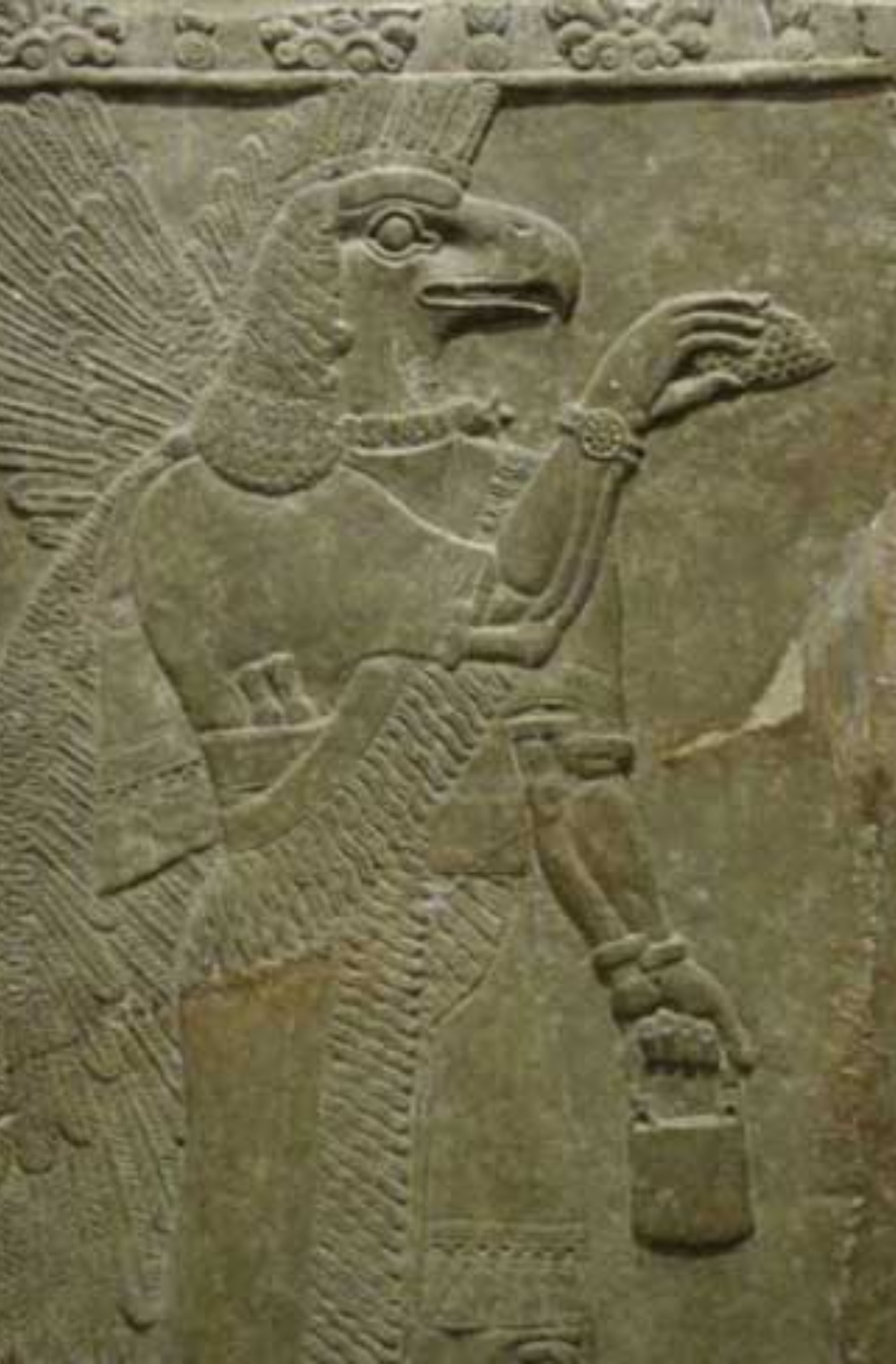
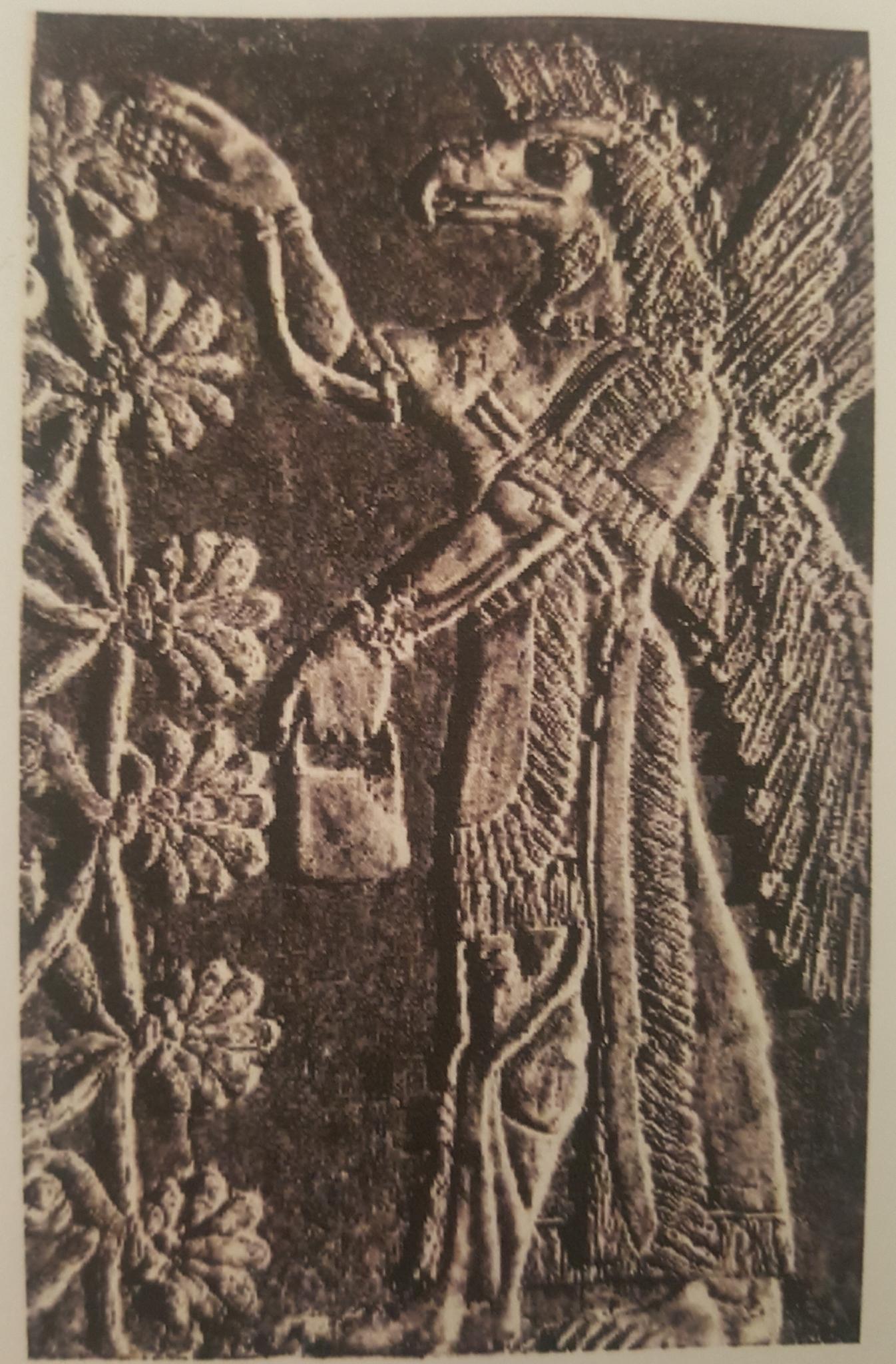
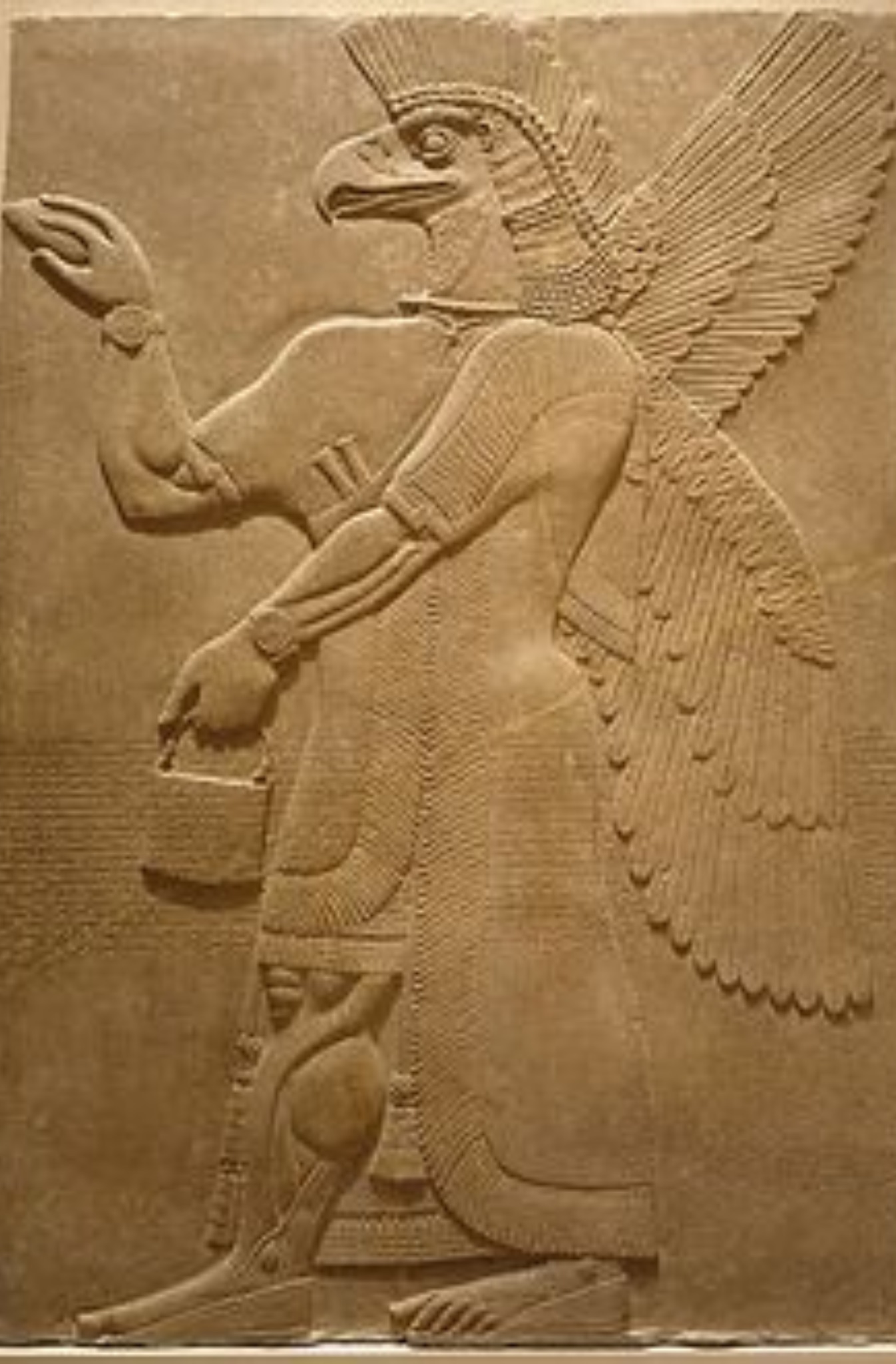
Neo-Assyrian / Mesopotamian reliefs depicting a wise god known as Anu, approximately 800 BCE
Though we may be presently estranged from our origins, the paths of our veins and neurons still take the shape of the rivers and branches of the Earth. Ambassadors of old still uphold the task of educating and informing us, and believe that the worlds of Men and Nature can dissolve, becoming the One World that once was, long ago. Now, they welcome us into their realm, and are willing to walk alongside us as they once did... Across a bridge of origin, into a common destiny.
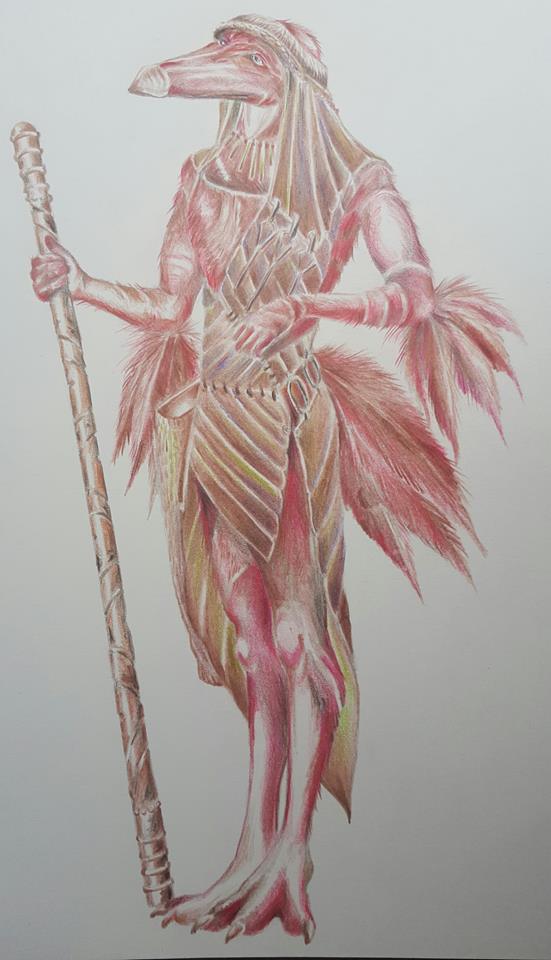
Yaffa of Amnamar, advisor to Queen Bry'e, wearing the traditional garb of her forest people, and carrying a prayer staff.
Introducing the Earthspeakers and Ambassadors: Dominant Tribes and Clans
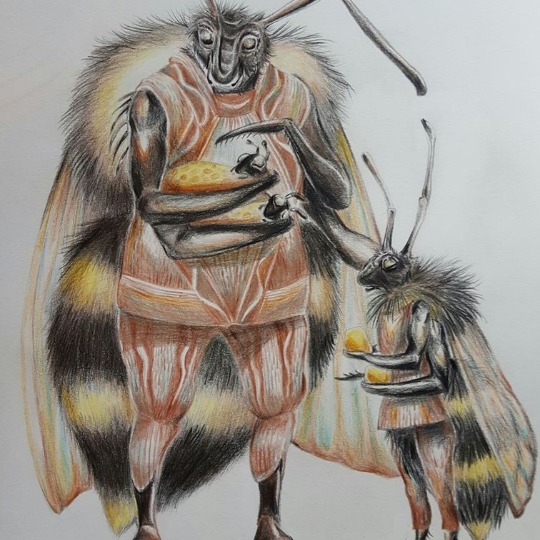
The Digiri
In the ancient Sumerian language, 'Digir' means 'God', and the Bee Folk were long revered as such. Bold, intelligent and hardy, able to construct massive and intricate cities, and capable of moving swiftly in large numbers, the Digiri people are among the oldest cultures in the Hidden World. Despite being regarded as the single greatest defense of the natural realm, the Digiri are quickly disappearing as the Earth struggles to maintain its fragile ecosystems. As delegates of the Earth's Summit Society, they speak for many species in decline.
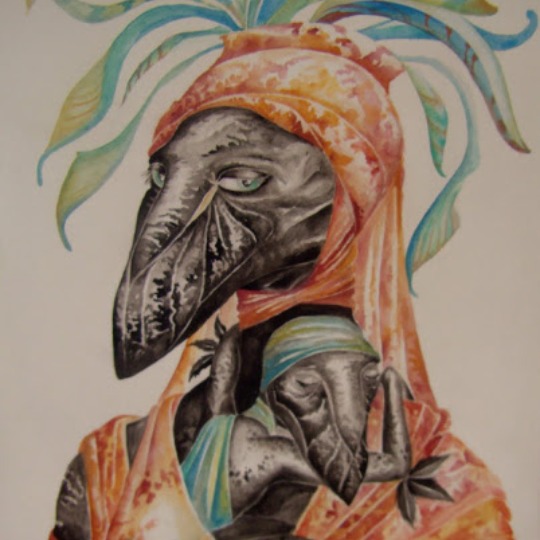
The Ou-Ti
Living in a forest region called 'The City of Trees' (known for powerful emissions of energy) the Ou-Ti People have remained in relative seclusion for thousands of years. Despite losing great swaths of their habitat to deforestation for human agriculture, the Ou-Ti are one of the few Ambassador cultures who shelter and tutor newly arriving modern humans, known as 'Iridians'. Their tribal leader, the wise and pacifistic J'Maari, still speaks the ancient languages of wind and water. J'Maari sends several of his most trusted advisors to the annual Earth Summit.
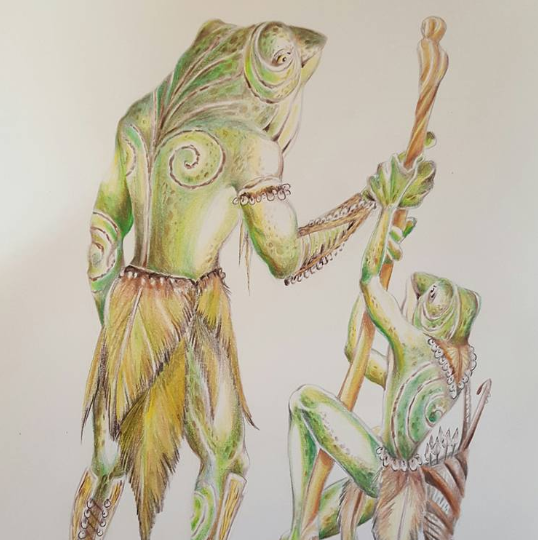
Ta'me
In the ever changing Vexed mists and Wandering bogs, the Ta'me Frog Folk hunt and fish, serve as stewards for the marshlands, and protect a reclusive group of shamanic snails known as The Shelkie. They have long held alliance with the Wasp and Water Beetle Folk, and are rarely seen beyond the borders of their wetland homes.
Dealing with invasive species brought in by human boats, and once nearly driven to extinction by human invaders, the Ta'me have learned to distrust Man.
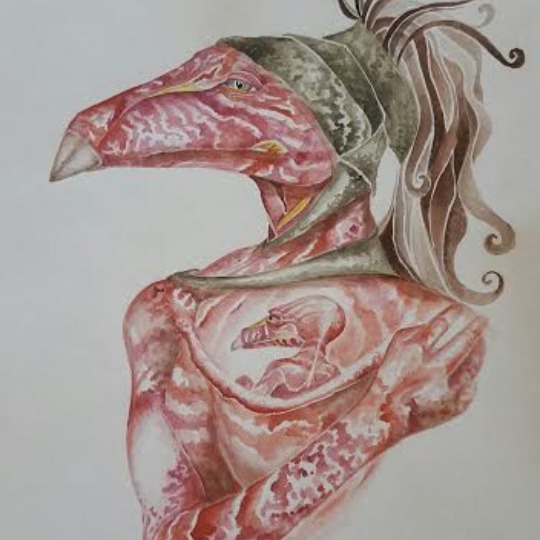
Clans of Amnamar
Living in temperate and tropic regions throughout the world, these isolated bush groups are led by formidable regional Queens, and speak Bynsch, one of the oldest languages on Earth.
Like most of the tribes of the Hidden Realms, Amnamar once engaged in trade with Men, but the greed of humans was insatiable, and conflicts with them were often violent.
Amnamar has long gone unrepresented in Summit hearings and gatherings, as the tribe prefers to remain insular.
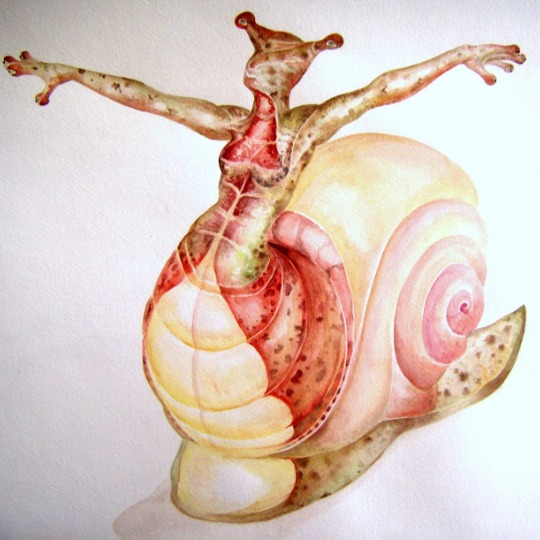
The Shelkie
In remote wetlands of the world, these enormous, wise snail folk maintain monastic practices, serving as planetary interpreters.
The Shelkie enjoy the company of young human students and provide guidance if the individuals show proficiency in Earth interpretation.
Though they are quite vulnerable to changes in their environment, the Shelkie have the ability to seal themselves in their shells and survive for up to three years.
As they are slow-moving, the snail folk often send ambassadors from the Ta'me tribe to speak of their concerns.
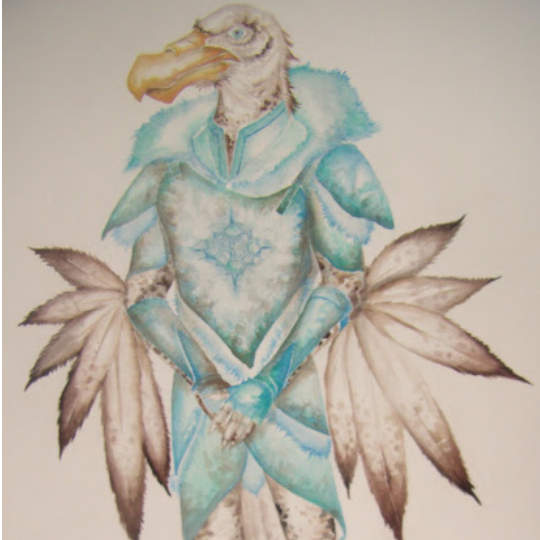
Petrel-Atal
One of the toughest and fiercest of their kind, the Petrel-Atal were first among the Ambassadors to abandon their earth alliance with Men, who they refer to as 'Wasters'. The Petrel-Atal guard the (quickly disappearing) icy borderlands of Copirnikha (Antarctica), surviving in the coldest, windiest places on Earth, and making passage through these areas extremely dangerous, if not entirely impossible.
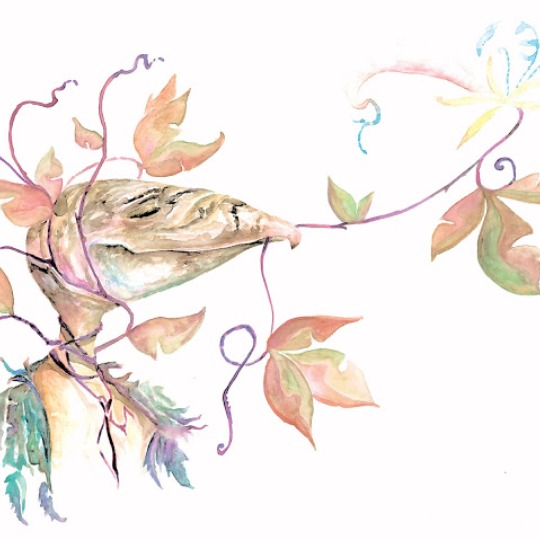
The Onepalipan
Led by King Abfosam Maso and Queen Hyurendi, the Onepalipan clan are soon to become environmental refugees as their islands are lost to sea level rise.
The Onepalipan have had some of the most difficult dealings with Men, but due to a single benevolent human washing up on their shores, the tribe supports the idea that the Men of earth can be brought back into balance. Abfosam is a high councilor and speaker at the annual Earth Summit.
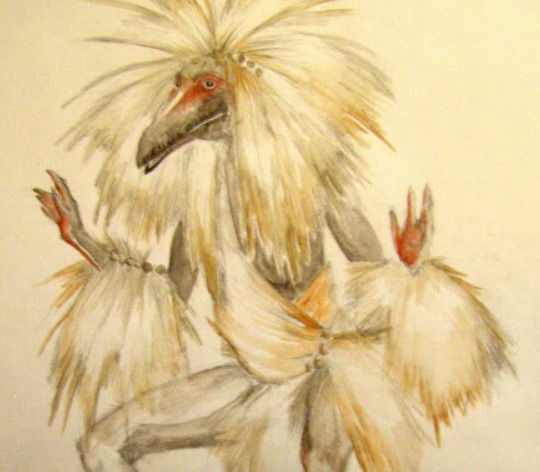
The Bynsch
A Deep Time tribe that has all but disappeared, the shamanic Bynsch clan is almost entirely ascetic, earning them the nickname 'The Bird Buddhas'. They exist on nearly every continent, but are encountered in dreams or altered states more often than in what is deemed 'reality'. The Bynsch blend in with their surroundings enough to become virtually invisibe, and are gifted linguists, with some individuals rumored to be fluent in over 50 forms of speech.
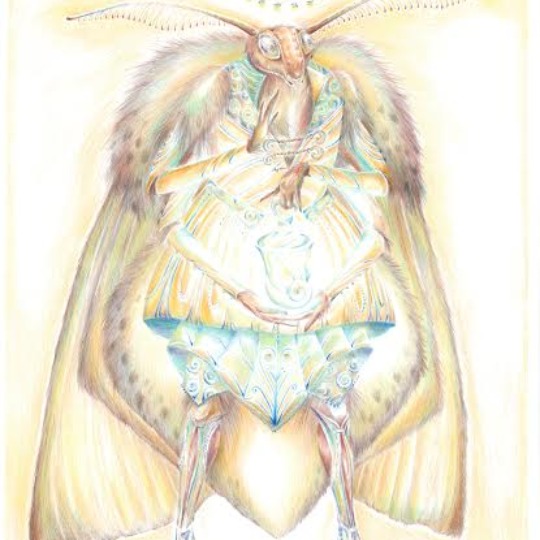
Cre'ahni
The Cre'ahni are comprised of all (land) creatures who create their own light, including glow worms, luminescent moths and fireflies.
The eldest of the Cre'ahni is Dashmanaug the Great Moth, known well in the Hidden Realms for his immense rehabilitation project, which seeks to heal the long range damages caused by human strip mining.

The Acappappa
The small, quirky and highly curious Acappappa are not much larger than the hummingbirds they so nearly resemble, and for whom they serve as natural ambassadors. Their penchant for fashion and design have led them to be considered vain, but the Acappappan style has been resplendently replicated by the humans they encountered, most notably in the high Victorian era.

Nesherthi Tribe
The Aramaic word for 'bird' can be either 'Ayit' or 'Nesher', but the latter typically refers to Eagles, where the former means 'Vulture'. 'Nesherthi' basically means 'the flightless eagles'.
The Nesherthi have been desert dwellers for centuries, their companions being the giant sand scorpions known as the Ra'awudul. Though the journey to the Summit is long and arduous, the tribe's ambassadors consider the task of Earthspeech a great honor.

Tsma (Tsung P'eu)
In the bog language, Tsma means 'island'. The creation myths of the turtle folk describe several immense and foolish tortoises who swam in the shallows of the young world and lodged themselves in place, creating the first land forms on which everything else grew. King Tsavyam of the Tsma is one of the oldest beings on Earth, often holding council with seemingly inanimate objects known as 'stone spirits', and communicating with the Zircon, the Stone King.
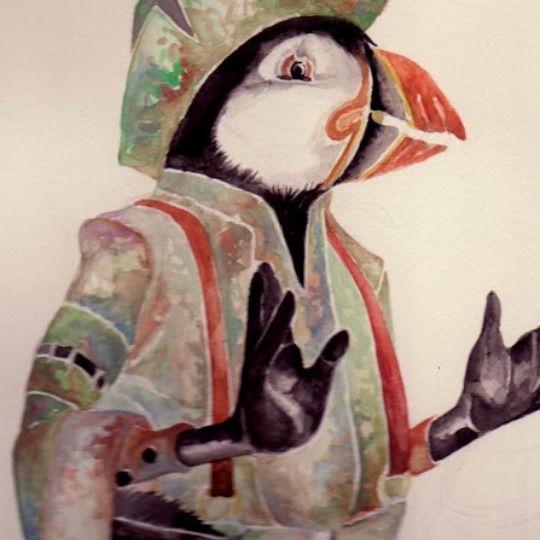
Ayakkeu
The range of the coastal Ayakkeu people once spanned from Nova Scotia, through Greenland and across the Atlantic into North Africa, Western Europe and Scandinavia. Their numbers dwindled over time, but not before they had deeply influenced the Neanderthal and Norse cultures. Like the later Wyandolorian, the Ayakkeu built splendid seaworthy ships, and may have assisted early Man in navigating long ocean crossings.
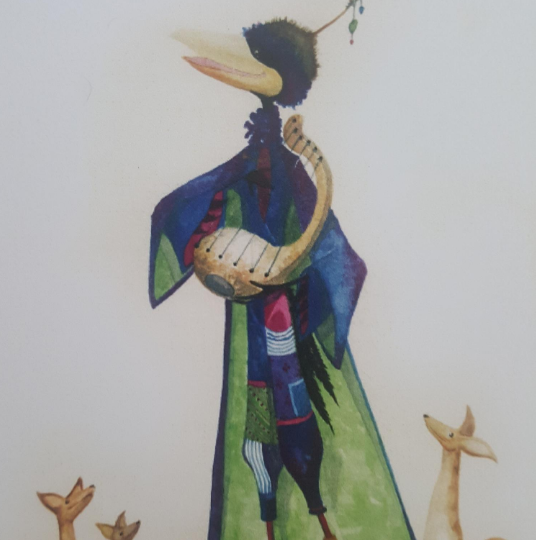
Twerdandles
To 'twerdandle' is to 'wander with a purpose', a colloquialism of this stout nomadic tribe. Living on the water in wood raft homes, these diminutive birds are well known for comedic antics, very long folk songs, and for a tradition of sewing patches on their clothing. The Twerdandles do this, not as a service to the garment, but rather as a means of remembrance. They are exceedingly rare, having been nearly wiped out by illnesses brought by early Man.

I'yilypu
The social wasps of the mangroves and Wandering Isles are known for astounding feats of inverted mud-and-paper architecture. The I'yilypu alliance with several species, including the Ta'me, The Shelkie, the Acappappa and Ou-Ti. They often serve in high political and aristocratic appointments in the Summit Society, an Earth equivalent of the United Nations.
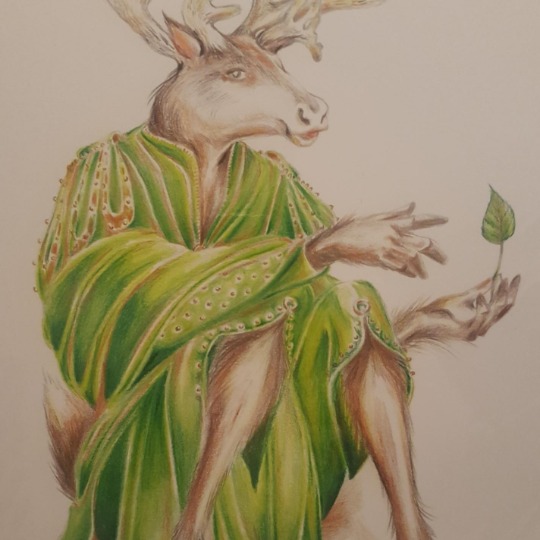
Ekmenn'ani
The tribes of caribou, moose, elk and deer, as well as some equatorial and highland groups in the goat, antelope and gazelle family, all refer to themselves as Ekmenn. The 'ani refers to their geographical location: 'ani' meaning boreal, 'ehli' being forest and grassland, 'aku' being desert steppe, 'oki' for mountainous lands, and 'i'eha' meaning ice realm. They hold permanent offices in the Summit Society, and usually uphold the idea that Man and Nature deserve equal support and defense.
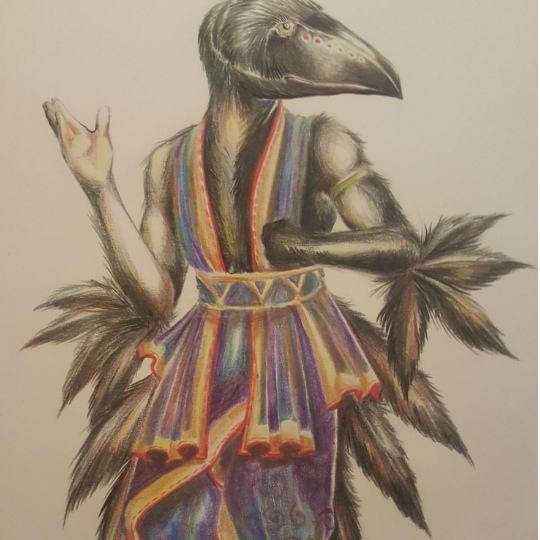
Fhakhan-Wyandolor
Among the most ancient of the Earth ambassadors, this clan is believed to have stemmed from two tribal groups who joined forces defending the cave dwellings of early Homo Sapiens. It is told in the Deep Time tales that some of the Fhakhan-Wyandolor then went with early man into the wild lands beyond, where Man and Ambassador made their world together. It is this fabled, ancient bond which solidifies the resolve of many present-day Earthspeakers.
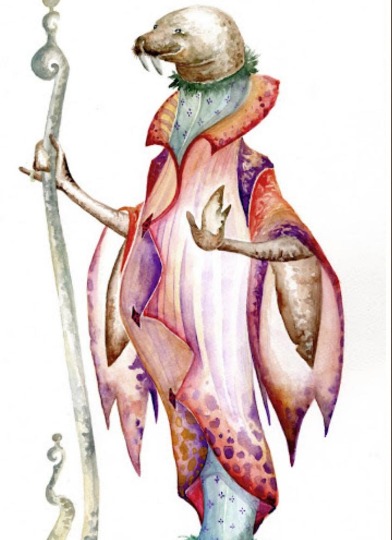
Gou'rri
As one of the few species adept both in deep water and upon land, the Gou'rri are key speakers for sea societies and ocean realms. Like the Bynsch, they have profound linguistic abilities, representing porpoise, krill, coral, narwhal, tuna, eel, sunfish and whale. They have an uneasy truce with Orca and the shark species, who are rarely represented in Summit hearings because of their tendency to eat representatives rather than speak to them.
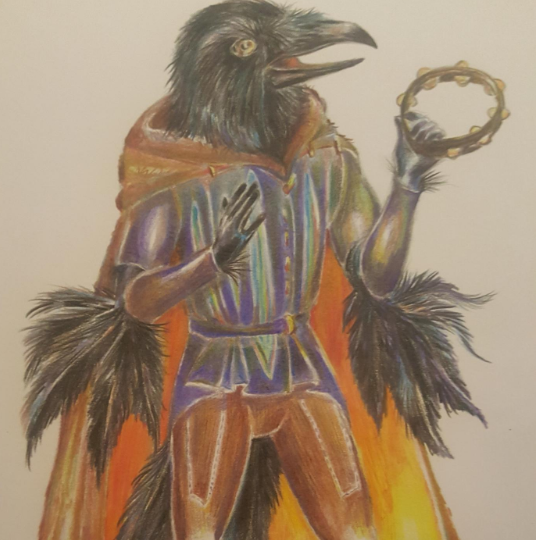
The Blackbard
Appearing in numerous fables and tales, the Blackbard tribe have been honored in Hindu cosmology and in modern narrative as the Ravens of Erebor. They were associated with Apollo and Odin, and are featured characters in epic poetry and creation myth across the human realm. As harbingers of war and death as well as representatives of royalty, the Blackbard hold both honorable and odious positions in the human pantheon. Preferring to entertain, they fulfill their role as ambassadors in poetic activism.
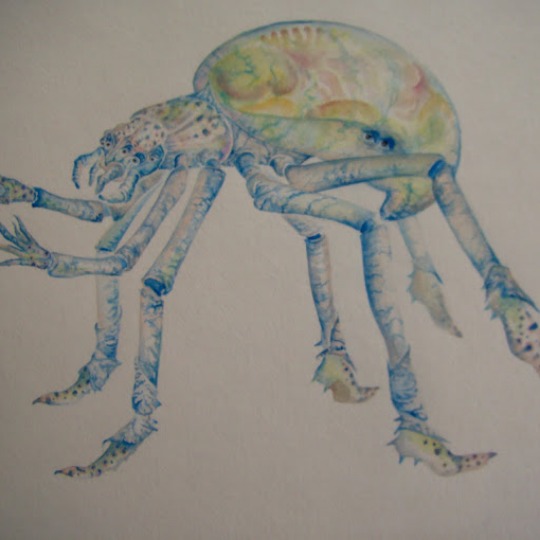
Bau-shaa
Like the Blackbard,the Bau-shaa are feared and revered in the ancient worlds of Men; seen as both destroyers and weavers of worlds, these immense creatures live in the under-realms or deep woods. Nearly extinct, there are only three known Bau-shaa individuals, all of whom safeguard a sacred aspect of Earth. Over the eons of her life, Ochelochka, the eldest of the three, has built the Silken Citadel, a massive underground library and cache of Earth wisdoms, similar in scale and eloquence to that of the Taj Mahal.
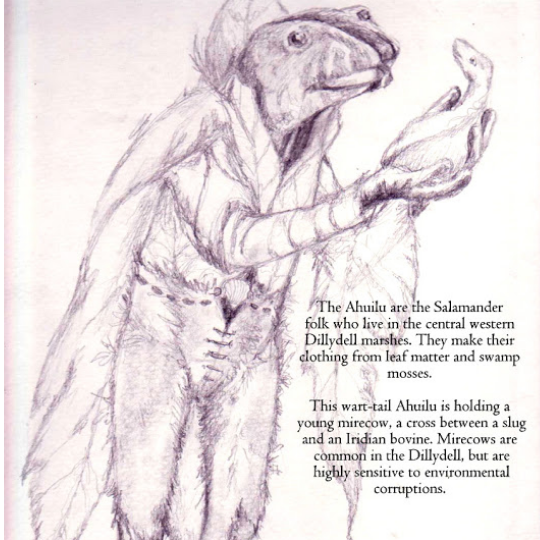
Zhao-Ahuilu (the Salamander King)
King Zhao is a massive and terrifying ruler reigning in the deep realms of nature. Especially vengeful toward and intolerant of humans, the The Salamander King expels or enslaves any outsider.
The related yet docile salamander Ahuilu people are a polar opposite in persona, serving as guides to incoming humans, and providing patient, benevolent stewardship in the forests and wetlands they call home.

The Pengoon
One of the toughest and most resourceful species in all the Hidden Realms, the Pengoon are renowned for their abilities to adapt to harsh environments.
The Pengoon living and work beyond the White Ships of Copirnikha do so with their homeland in mind, speaking out for the preservation and protection of unique and fragile kingdoms that are disappearing faster than ever before. Among them, Yaenouk (pictured) is one of the most traveled, and serves as the Voice of the Council.
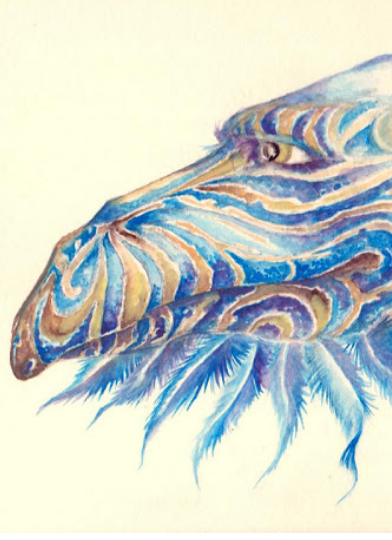
Bluebeards
One of the remaining clans to maintain trade and barter in the realms of Men, the Bluebeards are jovial punsters, and are usually well versed in the current culture. They enjoy card games, adore good cigars, and have a serious penchant for all human artifacts. If it's shiny, makes a strange noise, or seems to serve an odd and unexplained purpose, the Bluebeards collect it. And, as their name suggests, they grow a dense tuft of deep blue feathers under their beaks, giving them a 'bearded' appearance.

Mantisora
The Mantisora People have often been confused as dragons, and encounters with them have led to several of the oldest and most terrifying accounts concerning great, green and winged beasts with massive horns upon their heads. Though the females do own up to a bit of a reputation, the Mantisora as an elite group focus solely on the ambassador's duties, devote their lives to the betterment of Earth, and readily serve as speakers for lesser creatures whom their more typical sisters might otherwise simply consume.
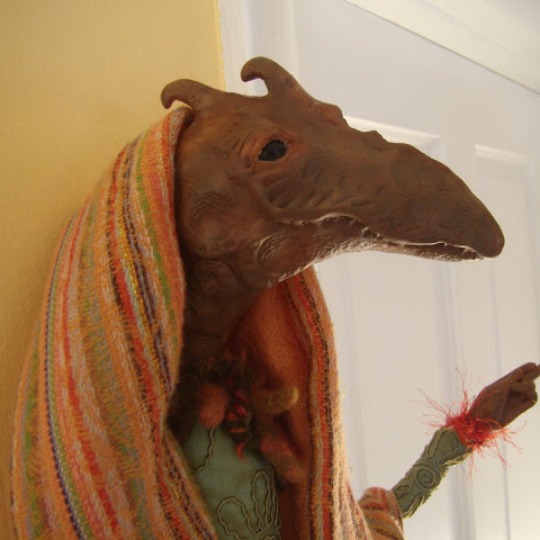
Siltweed
Living in the shallows in most of the world's waterways, these seahorse-like creatures serve as the voice for many of the much larger and far smaller aquatic cultures of the world. The Siltweeds cannot fully leave the water, but communicate easily with a host of land mammals who frequent the water's edge. 'The Silties', as they are often called, are especially interested in the health of rivers, streams, ponds, lakes and mangroves, and defend the smallest of their inhabitants.
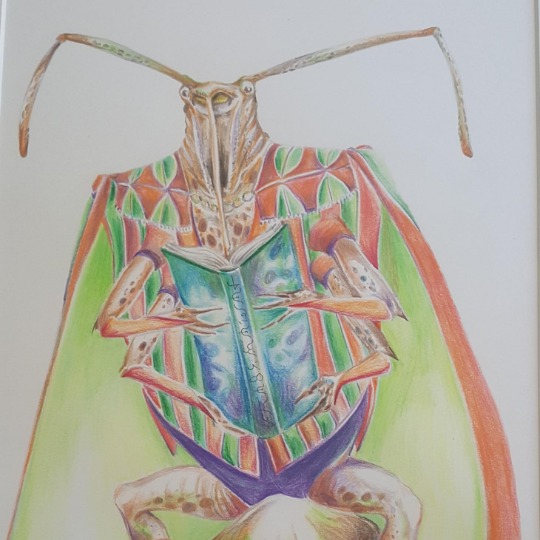
Abreb
Being seen by many as invasive, the Abreb have made the recent rise of problematic creatures on Earth their primary concern.
Across their range of influence, the eleven Abreb tribes have made efforts to put themselves to good use, spearheading Assistance, Rights and even Relocation programs for troubling species.
Men were surprised to discovered that they topped the list where invasive creatures were concerned, but the ambassador's creed states that all beings on earth deserve representation.
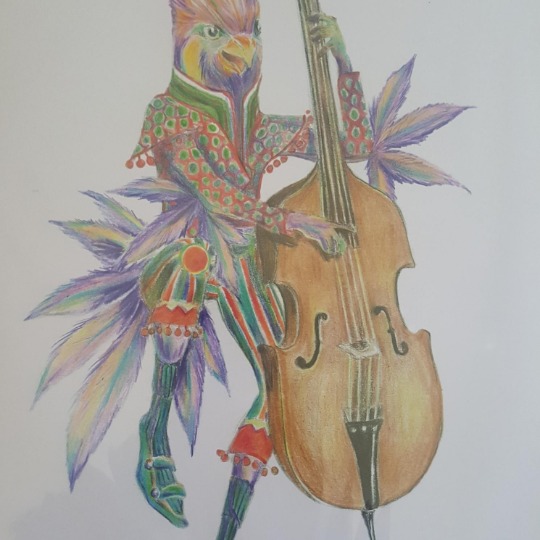
The Atolli
Cousins of the Twerdandlers, the spirited tropical Atolli throw extravagant parties, dress flamboyantly and usually play numerous instruments. They've heard of the Summit but have never attended; they gave up on the duties of ambassadorship long ago, and live by the adage 'ignorance is bliss'. Their only contact with others occurs when their habitat is encroached upon - and when this does happen, rather than make much of a fuss about it, the Atolli simply pick up and move to a new location.
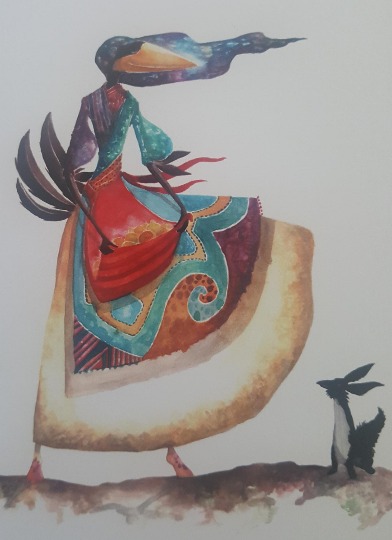
Dowladar
The wind has many names, and perhaps in the Dowladar (which is a region and also a tribe) it seems there are more winds than anywhere in the world. The same region is home to the oldest of the Stonemudgins, spirits who live partially submerged in the Earth and arise when called upon. The Dowladar tribe are well known for their weaving, basketry and felt arts, and live in earth lodges 'where the wind can sing, but does not sting'.
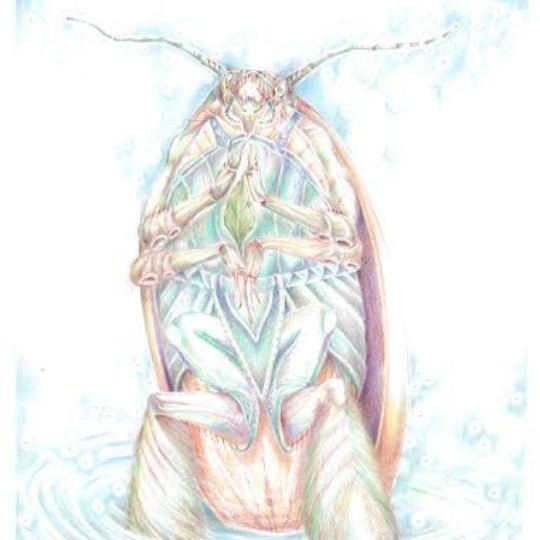
Ashandi (Water Beetles)
One of the largest shallow diving creatures on Earth, the Ashandi are the living boatmen of the secret world. With some of their kin nearing 15 meters in length at adulthood, they are an excellent and swift form of transportation, and most species have an easy demeanor. Ferrying cargo and sometimes humans in giant air bubbles beneath their bodies, the boatmen are a great ally of the Kinnarit and other human clans of the Hidden Realm. After death their tough carapaces last for decades, and can be used as armor or as a shield.
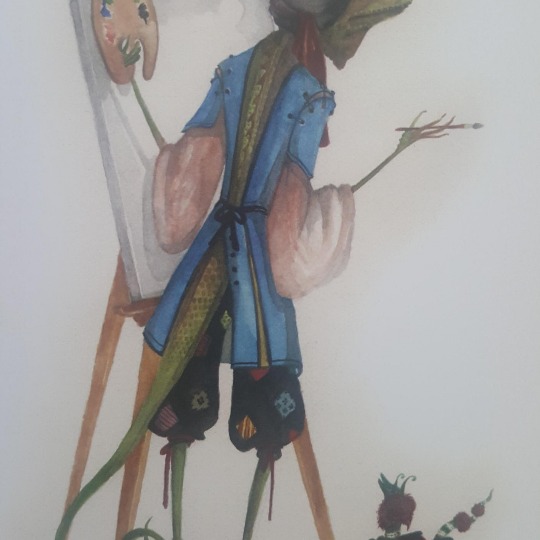
Lizaad
Also confused as dragons just as their large green brethren, the Mantisora, the Lizaad are far less cordial when encountering Man.
If left alone in their sequestered environs, the Lizaad will endeavor in fine artisanship. They also work in metal, but often construct strong cages in which to house and dispose of unwanted humans. Sent to so-called
'adjournment facilities', many innocent folk are expelled into the lands of Men, called 'Iridia'.

Refugees
Human tribes in the Hidden Realms are few, and most are remnant groups from periods of oppression in the world of Men. Going back to the time of Genghis Khan and Tamerlane, groups suffering the threat of eradication or displacement sought refuge with the Ambassadors.
Fleeing Mongols, African slaves, Native Americans, Jews, and even Ottoman, Armenian and Vietnamese refugees were among those assimilated into earth realms.
Even the Inuit, who have seen the recent influx of outsiders and are rapidly losing their way of life to a shifting climates, seek refuge in the safety and richness which can often be found the ambassador's world.

Adventurers
Born in Damascus and raised as a devout Muslim in the port city of Acre, as a young boy Jhobar was fascinated with the flight of Mohammed, and dreamed of one day flying himself. By chance he encountered a Fakhan ambassador, and was invited into a secret earth society, which led him to study earthspeech in the Nahal river basin. There he met Zarkola, a brilliant eccentric whose sole desire was to journey in bio-electric flying machines. Jhobar soon became a copilot, and left the Middle East hoping to see the world from above. Though not all adventurers treated the Hidden Realm with respect, as Jhobar did, many exchanged wealth and knowledge, and made promises to protect the ambassadors and their legacy.
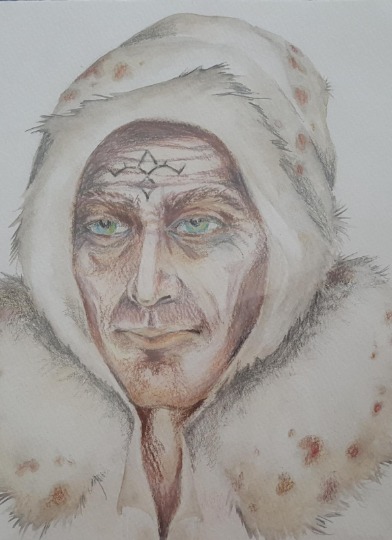
Traders
Descendants of the early trappers of the American West, a small number of rugged men and women began team-driven trade routes spanning from the Aleutian Islands to the Drake Passage leading to Antarctica. Early exchange of information and goods with Ambassador tribes and clans deteriorated as the Industrial Revolution took hold, and after tensions led to violence, shorter (and often weaponized) relay caravans became the norm.
Weyth (shown above) displays a prominent tattoo of a bird deity (which he inverted as a symbol of defiance). The inverted 'Glynn' is the primary symbol for resistance and uprising in Nature's realms.
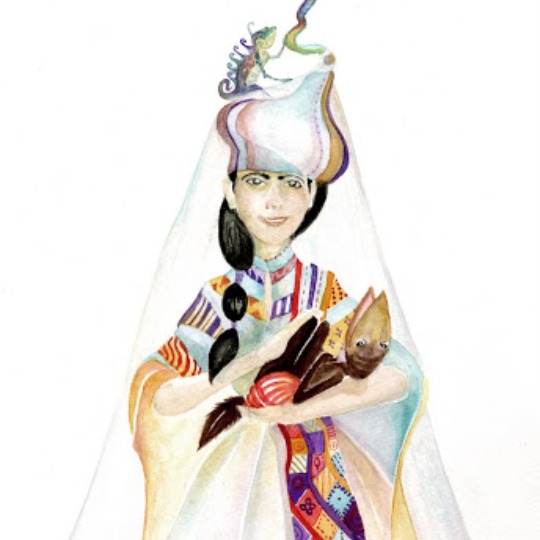
Ambassadors
Some humans born in the Hidden world learn of the realms of Men and choose to venture into them as representatives of a vanishing way of life. Often assimilating into the
'Iridian' society as homeless or vagrant individuals, they blend into the culture through a network of ambassadors who appoint them with tasks and identity. Once established, they seek to influence policy-making and implore like-minded individuals, discouraging the common practices they often refer to as 'The Endways'.
Ambassadors in the worlds of Men move freely from one world to the other with the help of individuals known as Ferriers. But they must do so cautiously; the Hidden Realm is called such for good reason.

The Kinnarit
With ancestors spanning back into a time before written history, the Kinnarit people are a largely nomadic tribe, having no ancestral or experiential ties to the modern human world. They've never used any of the modern conveniences, have never seen a skyscraper or used an internal combustion engine. Among these tribes, the best known is the B'Urendi family, who have aided the island nations of Onepali'e (Abfosam Maso and his clan), and who have long befriended the hives of the Digiri. Even the Kinnarit have long lived under threat of expulsion, as more and more of the protectors of Earth turn from Men in growing fear of his effect on the world.
